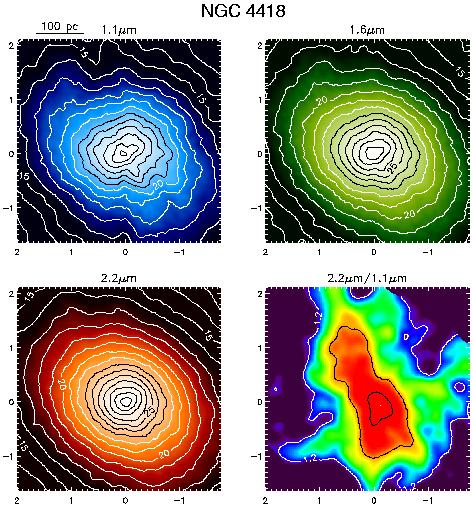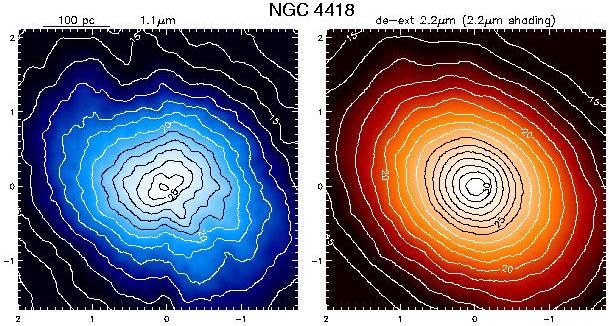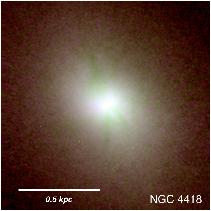

The nucleus of this galaxy exhibits strong extinction along the galactic
disk to within 100 pc of the nucleus which causes the short wavelength
emission (1.1 µm) to be elongated perpendicular to the plane of the
galaxy at small radii. The
reddening is most easily seen in the ratio image above.
Evans et al. (1999a) compare the near-infrared (NICMOS) morphology of the
nuclear region with recently acquired mid-infrared (MIRLIN) images and
discuss the possibility that the bulk of the luminosity of NGC 4418
emanates from a region obscured by a compact (~ 130 pc) stellar disk.
Shaded contour plots of the extinction corrected
2.2 µm emission are shown together with the 1.1
µm (upper left)
observed emission. In both panels, the contours and shading are
logarithmic with the contours spaced by factors 21/2. (The level
values are the same as for the figure above). The arcsec displacements
in RA and DEC, given along the borders are measured from the 2.2
µm in
all frames. At the upper left, a length bar is drawn. For the ratio image,
both the 2.2 and 1.1 µm images were smoothed with the same adaptive
smoothing and then smoothed with a Gaussian FWHM = 0.2" in
calculating the 2.2 µm opacity from Eq. 3 (see text). In
cases where a
strong point-source or variable background contaminated the 2.2 µm
image, the extinction corrected image was derived for 1.6
µm. For the
galaxies with strong point-sources, the PSF was fit to the source and then
subtracted and replaced by a Gaussian with the proper integrated flux (see
text - NGC 7469,
IRAS 08572+3915, IRAS 05189-2524, PKS 1345+12,
IRAS 07598+6508, Mrk 1014 and 3C48).


